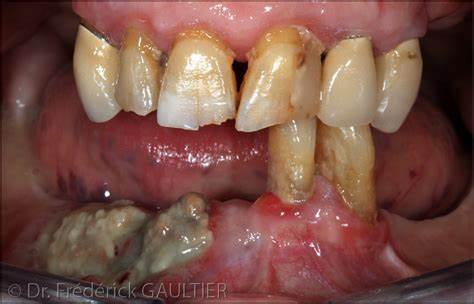‘Save a Tooth’
Dentists should always be prepared to give appropriate advice to the public about first aid for avulsed teeth.
An avulsed permanent tooth is one of the few real emergency situations in dentistry.
In addition to increasing the public awareness by, for example, mass media campaigns, healthcare professionals and teachers should receive information on how to proceed following these severe unexpected injuries.
should receive information on how to proceed following these severe unexpected injuries.
Also, instructions may be given by telephone to people at the emergency site. Immediate replantation is the best treatment at the place of accident.
If for some reasons this cannot be carried out, there are alternatives such as using various storage media. If a tooth is avulsed, make sure it is a permanent tooth (primary teeth should not be replanted)
First aid for avulsed teeth at the place of accident
• Keep the patient calm.
• Find the tooth and pick it up by the crown (the white part). Avoid touching the root.
• If the tooth is dirty, wash it briefly (max 10 s) under cold running water and reposition it. Try to encourage the patient/guardian to replant the tooth. Once the tooth is back in place, bite on a handkerchief to hold it in position.
• If this is not possible, or for other reasons when replantation of the avulsed tooth is not possible (e.g.,an unconscious patient), place the tooth in a glass of milk or another suitable storage medium and bring with the patient to the emergency clinic. The tooth can also be transported in the mouth, keeping it inside the lip or cheek if the patient is conscious. If the patient is very young, he/she could swallow the tooth – therefore it is advisable to get the patient tospit in a container and place the tooth in it. Avoid storage in water!
• If there is access at the place of accident to special storage or transport media (e.g., tissue culture/transport medium, Hanks balanced storage medium (HBSS or saline) such media can preferably be used.
• Seek emergency dental treatment immediately.
Tooth Avulsion
Treatment guidelines for avulsed permanent teeth
Choice of treatment is related to the maturity of the root (open or closed apex) and the condition of the periodontal ligament cells.
The condition of the cells is depending on the storage medium and the time out of
the mouth, especially the dry time is critical for survival of the cells.
After a dry time of 60 min or more, all periodontal ligament (PDL) cells are nonviable.
From a clinical point of view, it is important for the clinician to roughly assess the condition of the cells by classifying the avulsed tooth into one of the following three groups before starting treatment :
• The PDL cells are most likely viable (i.e., the tooth has been replanted immediately or after a very short time at the place of accident).
• The PDL cells may be viable but compromised. The tooth has been kept in storage medium (e.g., tissue culture medium, HBSS, saline, milk, or saliva and the total dry time has been <60 min).
• The PDL cells are non-viable. Examples of this is when the trauma history tells us that the total extra-oral dry time has been more than 60 min regardless of if the tooth was stored in an additional medium or not, or if the storage medium was non-physiologic.
crossorigin="anonymous"></script>




Comments
Post a Comment